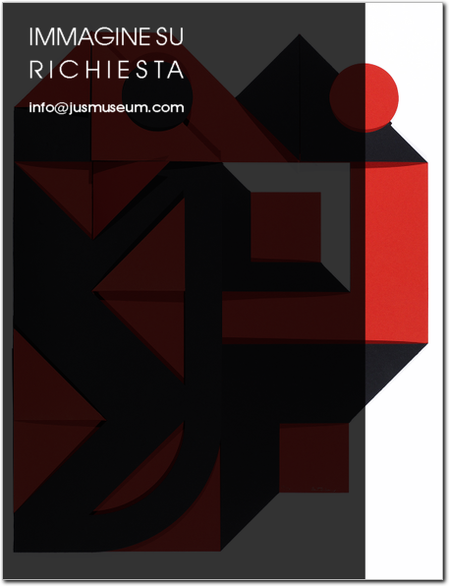ENRICO CASTELLANI
Born in Castelmassa, Rovigo, in 1930, he moved to Brussels in 1952 to study Painting and Sculpture at the Académie des Beaux-Arts. In 1956, he graduated in Architecture from the École Nationale Supérieure de la Cambre. He then returned to Milan, where he began working at the studio of architect Buzzi, with whom he collaborated until 1963. In 1959, he created his first relief surface. Together with Piero Manzoni, he became involved with the Zero group and co-founded the magazine Azimuth and its eponymous gallery, where he held his first solo exhibition in 1960. That same year, he exhibited three relief surfaces at Monochrome Malerei at the Städtisches Museum in Leverkusen and, alongside Manzoni, at Galleria La Tartaruga in Rome. In 1962, he exhibited with Manzoni at Galerie Aujourd’hui in Brussels and took part in the Nul exhibition at the Stedelijk Museum in Amsterdam. In 1963, he held a solo show at Galleria dell’Ariete in Milan. The following year, he presented three works at the XXXII Venice Biennale and participated in the Guggenheim International Award in New York. In 1965, his large Superficie bianca was featured at the Museum of Modern Art in New York as part of The Responsive Eye exhibition. His work was also selected to represent Italy at the VIII Bienal do Museu de Arte Moderna in São Paulo and at Trigon 65 in Graz. In 1966, he was given a personal room at the XXXIII Venice Biennale, where he won the Gollin Prize. He spent some time in the United States and created works for his first solo exhibition at Betty Parsons Gallery in New York. In 1967, he was invited to create an environmental piece for Lo spazio dell’immagine at Palazzo Trinci in Foligno, which was partly destroyed after the show. A second version was presented in 1970 at Vitalità del negativo nell’arte italiana 1960/70 at Palazzo delle Esposizioni in Rome. After a period of “exile” in Switzerland, he returned to Italy in 1973 and moved to Celleno, a small village in Viterbo, where he lived and worked during his second artistic phase. In his later years, his work gained international recognition. Notable exhibitions include solo shows at Lia Rumma in Milan (1999), marking the opening of the gallery’s Milan space, the Prada Foundation in Milan (2001), Kettle’s Yard at the University of Cambridge (2002), and at Greta Meert in Brussels (2002). He also exhibited at Galerie Di Meo in Paris (2004), the Pushkin Museum of Fine Arts in Moscow (2005), Lia Rumma in Naples (2006), and Haunch of Venison in New York (2009 and 2012). His remarkable career culminated in receiving the Praemium Imperiale for painting, the highest international artistic honor, awarded by Prince Hitachi, Honorary Patron of the Japan Art Association. He passed away in Viterbo in 2017.

ROSSO-NERO, 1999
multiple on two-colour laminated and die-cut paper
cm. 70x55,8
150 es.

